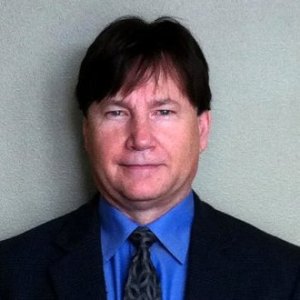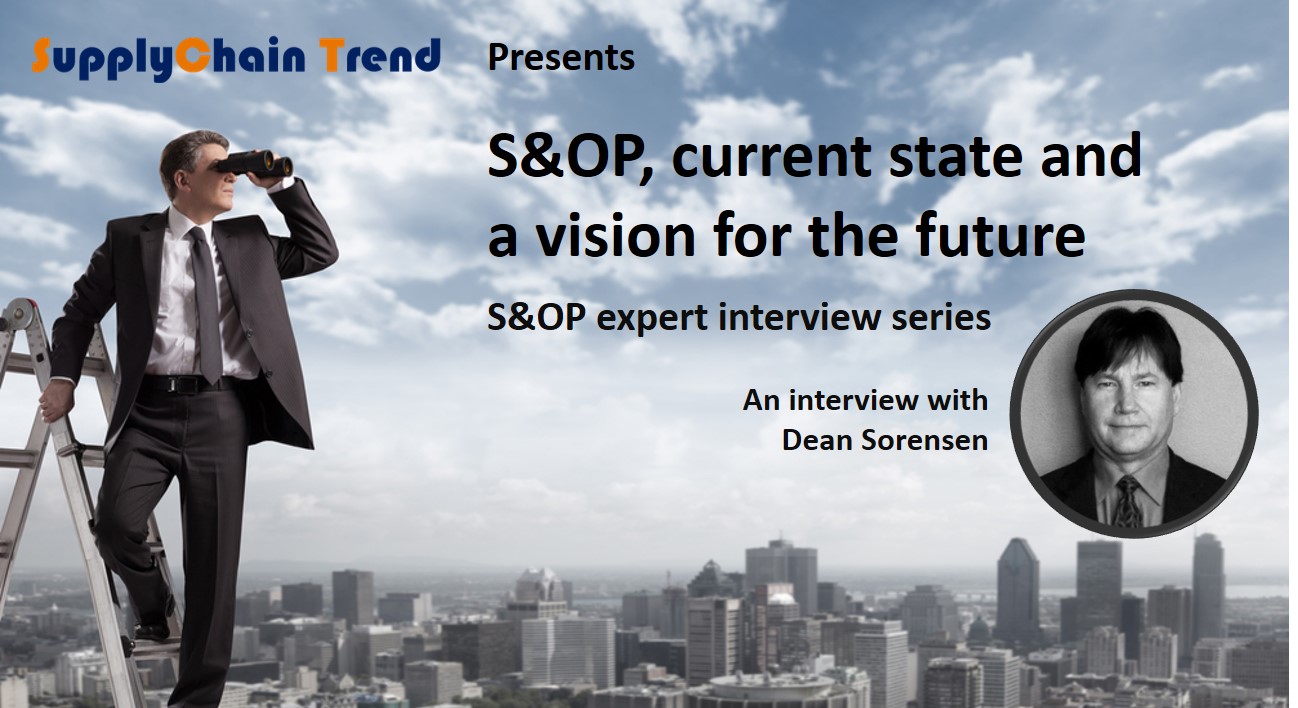Introduction
In the last 30 years S&OP improved performance in many businesses. However, S&OP has not yet substantially delivered on its ultimate promise of enterprise wide resource management, rolling financial forecasting and strategy deployment. Whatever maturity model or consultancy support companies use, S&OP seems to get stuck. Worse, overall S&OP development and progress seems to have stalled. It sometimes seems like S&OP is stuck in a time warp, where the same old things as 30 years ago are being discussed. On top of this we can see examples of marketing driven service providers that very doubtfully brand their product S&OP, or make up new names for existing S&OP processes. The S&OP Pulse Check 2015 suggests S&OP practitioners are left behind in confusion:
- 62% of respondents think there is not enough innovation in S&OP systems
- 64% think there is not enough coordinated innovation in S&OP processes
- 68% think behaviours are not addressed enough in S&OP implementations
- 71% think we need more industry standards around S&OP
Where to go from here for S&OP?
To get some answers for S&OP practitioners, Niels van Hove founder of Supply Chain Trend, interviewed a group of S&OP leaders. These leaders all have 20+ years S&OP experience and published books, whitepapers and articles in renowned magazines. A group, eligible to comment on the current state of S&OP. A group, that has shown passion to improve S&OP and a willingness to provide ideas for the future. Supply Chain Trend will publish a weekly Q&A with these S&OP leaders.
This week is the last interview in this series with: Dean Sorensen
 Dean is the founder of the IBP Collaborative – a consultancy that helps manufacturers leverage “Innovative Business Practices” to make step change improvements to how they plan, manage and govern their business. He writes and speaks frequently about integrating strategic, financial, sales and operational processes as a means to more effectively manage complexity. And why these processes can increase profits by up to 5% of sales.
Dean is the founder of the IBP Collaborative – a consultancy that helps manufacturers leverage “Innovative Business Practices” to make step change improvements to how they plan, manage and govern their business. He writes and speaks frequently about integrating strategic, financial, sales and operational processes as a means to more effectively manage complexity. And why these processes can increase profits by up to 5% of sales.
Dean has worked with over 100 manufacturers in strategic, financial and operational roles, across a variety of industries including, Food and Packaging Goods, Consumer Goods, Chemicals, Aerospace, Automotive, Industrial Goods and High Tech. He has worked with AT Kearney, Accenture and KPMG, the latter including both consulting and public accounting. He has a BBA from York University and has a CPIM from APICs.
S&OP, a vision for the future interview
Niels: Can you describe your most significant involvement in IBP?
Dean: I have been involved with integrated planning for years. But where I really experienced its value was when I worked for a company that made Prescriptive Analytics / Integrated Business Planning (IBP) software. I saw first-hand how clients used integrated planning to create significant value – ranging from $100 Million to over $1 Billion.
Niels: How would you describe your personal passion for IBP?
Dean: Like Sean, I don’t have a passion for IBP. I have a passion for helping companies become great. And more specifically, helping companies remove barriers that prevent them from doing so, one of which is an inability to manage complexity. I believe that integrating strategic financial and operational planning and performance management processes plays a central role in effective complexity management, which is where my passion lies.
I further believe that Finance will become one of the key drivers of these processes. Especially as Financial Planning and Analysis functions recognize the need for integrated processes to improve things like forecast accuracy, cash flow forecasting, foreign currency exposure management, working capital and cost management. Enabling finance to establish such processes is another passion of mine.
Niels: According to most maturity models, IBP stalls or even fails. Why do you think this is?
Dean: In smaller and less complex manufacturers, mature processes can be achieved through a combination of manual and technology-enabled processes. When S&OP / IBP stalls, it’s usually because organizations don’t get the fundamentals right. Many of them were addressed by the other authors in this series, including executive sponsorship, stakeholder engagement process understanding, vision and ownership.
In larger companies, one other factor limits the maturity of S&OP processes. That being that many S&OP tools don’t support mature planning and performance management processes, either on their own or together with financial tools as part of process. Processes rarely get beyond stage 2 on a 5 point maturity scale. These perspectives are explained in the YouTube video (7:36) below.
Niels: What missing from IBP that contributes to these shortfalls?
Dean: In complex manufacturers, it becomes increasingly difficult to establish mature forms of integrated planning and performance management processes with a patchwork of technology. There are too many moving and interconnected parts to make processes work effectively. In such cases, manufacturers often experience four critical capability gaps. These gaps are noted below and explained in more detail in the aforementioned YouTube video:
- Integrated Scenarios (that leverage a single planning model and process) to simultaneously expose financial and operational risk across multiple functions and legal entities
- Connected outcomes and trade offs, where the assumptions that connect strategic targets to financial and operational plans are exposed and managed
- Concurrent processes, that can quickly reset targets, reallocate resources and realign cost structures to meet profit and service level objectives
- Cross Functional Governance that provides the means to eliminate functional silos and behaviors that are driven by fixed annual budgets.
Niels: What do you think are some of the fallacies about IBP?
Dean: Following from the last bullet point above, one of the biggest fallacies lies in the belief that complex manufacturers can achieve effective IBP processes without re-engineering financial planning, budgeting forecasting and performance management processes.
Here’s the problem. S&OP is a cross functional process, the value of which depends on a fluid flow of resources across functions and legal entities. However, achieving fluid resource allocation is undermined by annual and functionally-based budget processes – the same ones that most financial Corporate Performance Management (CPM) software provides. In other words, CPM tools don’t always support mature S&OP processes.
Now the complication: most S&OP and CPM tools don’t support processes that can effectively address this problem. What they do support are immature IBP processes that undermine a host of cross functional programs like continuous improvement, operational excellence and sustainable cost reduction. These perspectives are explained in the YouTube video (51:22) below.
Niels: Why do you think that little change is being made with tools that support IBP?
Dean: I see little innovation from traditional S&OP or financial CPM software vendors to address this issue. This happens because S&OP and financial CPM software companies make tools to serve the needs of individual functions and stakeholders. They do this because this is the way that the vast majority of companies buy planning and performance management software.
What this means is that there has been little incentive for either S&OP or financial CPM vendors to create capabilities that encroach on the other’s domain. The net result has been the immature forms of planning and performance management processes that are currently supported by many software vendors.
Niels: What do you think has changed that can address this maturity shortfall?
Dean: I see the emergence of newer and more forward thinking supply chain vendors. They provide broader solutions having incremental capabilities that provide the means to effectively integrate strategic, financial and operational planning and performance management processes. In so doing, they specifically address the four capability gaps that I identified earlier.
I liken this innovation to how ERP evolved over two decades ago. I wrote about this evolution in separate article entitled, “Why Strategic CPM Could Soon Be Obsolete For Complex Manufacturers: Implications For Selecting Financial Planning & Performance Management”. It also explains why legacy S&OP software could also become obsolete.
Niels: How would you describe your future vision for IBP?
Dean: I don’t have a vision for S&OP or IBP. These terms are overused and don’t really reflect mature forms of process integration. In this context, I have a vision for a broader Enterprise Planning and Performance Management Process that brings together strategy, finance and operations. I wrote about it in a separate article entitled, “Beyond S&OP and IBP to Enterprise Planning”.
This continuous process would integrate S&OP and rolling forecast processes by supporting the four capabilities mentioned earlier. One of the key changes that it would support would be to formally engage business process owners in planning and managing the business. What’s more, it would enable organizations to shift decision rights and governance structures to a more outcome-focused approach that is aligned with strategy.
This process would create both tactical and strategic sources of value. From a tactical perspective, it would reduce the cost of planning and managing a business by up to half. And from a strategic perspective, it would create value by enabling strategy and cost structures to self-adjust to changing market conditions. In so doing, it would also drive the achievement of operational excellence, profitable growth and sustainable cost reduction objectives.
Niels: What needs to be done to reach that vision?
Dean: To achieve this vision, manufacturers will need to do three things. First, executives need to develop a shared vision for a fully integrated process. As part of this vision, they need to define what the process looks like, critical capabilities that enable it and key changes that will be introduced.
Second, they need to connect this vision to an important business challenge. For example, one of the most important challenges facing CEO’s is ineffective complexity management – a capability gap that is costing companies upwards of 5% of sales. This gap also undermines the achievement of other objectives like operational excellence. The point here is that S&OP / IBP should be part of an overarching program that drives the business agenda.
Last, they need to identify an owner of this broader enterprise-wide process, examples of which include the Chief Operating Officer, Chief Performance Officer and the Chief Financial Officer. I see operationally savvy CFO’s as being well positioned to assume this role. Especially as Financial Planning and Analysis professionals begin taking a more active role in operational planning and performance management.
Niels: What is your message for S&OP practitioners, who seek to establish broader and more effective forms of integrated planning?
Dean: If you’re seeking to establish more mature and integrated processes, you’re not going to get there without finance. You need to work Finance to resolve process deficiencies and gaps that neither can resolve on their own. During this process, you need to show Finance how integrated processes will solve problems that are important to them. By doing so, you’ll reach your IBP vision a lot faster.
Niels: Thanks a lot for your insights Dean.


I have been trying to download the article by Dean “Beyond S&OP and IBP to Enterprise Planning” from the link provided.
It appears that the captcha is not working the way it should and does not allow me to download this article.
Is there an alternative site from where this article could be downloaded?
Thanks for letting me know. I removed the link.
I’m not aware of an alternative site, but you might be able to ask Dean for further information